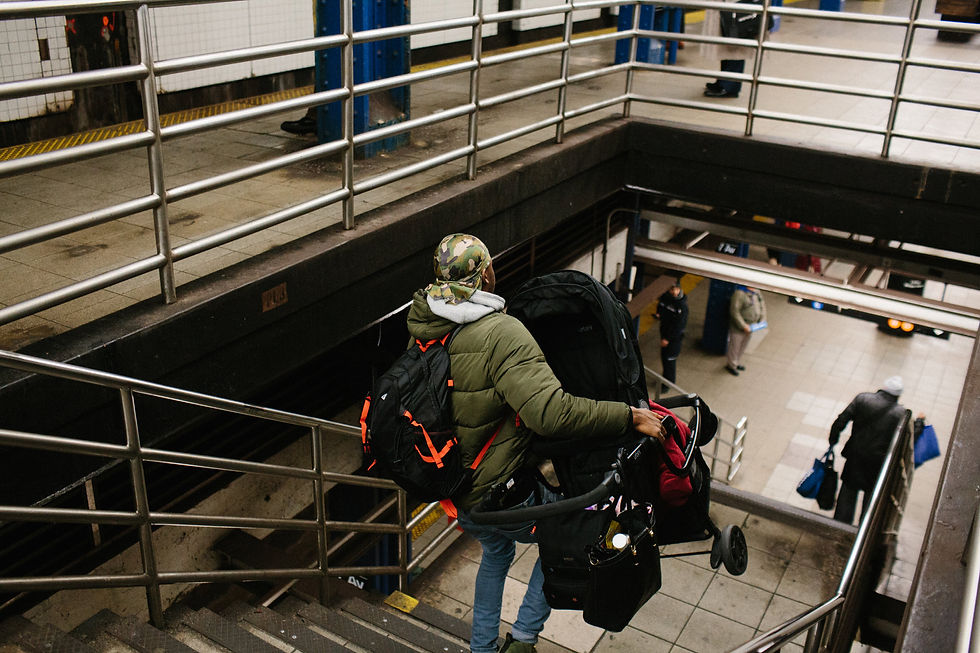When Customer Experience Can be the Difference Between Life and Death
- Daniel Seewald

- Feb 4, 2019
- 4 min read
On a frigid November evening, I ascended the steep steps at the 7th Avenue subway station in midtown Manhattan. I was in a hurry but couldn’t help noticing two women awkwardly carrying a baby stroller down a flight of stairs. I quickly jumped into action and took hold of the stroller and guided it down to safety on the platform. A simple human act that scores of people routinely do for their fellow commuters every week. But as I continued along on my journey, I couldn’t help but wonder how commuters with small children, those who are pregnant or have a disability, survive the daily gauntlet of commuting.

Sadly, a few months after this observation, a commuter tragedy struck. At the very same station on 7th avenue, a 22-year-old woman stumbled down the same flight of stairs, leaving her unconscious and unresponsive. Her 1-year old baby survived. But the accident, in hindsight, was inevitable. New York’s mayor fired out that “The subway system is not accessible for everyone, and that’s an environment the M.T.A. should not allow.” But this criticism sounded hollow and full of the same political posturing rather than a serious intention to reform the New York city subway system. Today, the New York City subway system on its best day can feel decrepit, inaccessible and unreliable. But that was not always the case. The New York city subway was once the emblem of courageous urban planning, bold engineering and lasting innovation. The subway system is undoubtedly in need of more than a simple face lift. It requires major reconstructive surgery. In fact, the NY Times published an in-depth analysis of the challenges that beset the system and the Metropolitan Transit Authority (M.T.A). Of course, a system as extensive and tenured as New York’s requires massive injections of financial and human capital to reform its fundamental frailties. But as we wait for the city and the M.T.A. to figure out how to answer these resource questions, the M.T.A. can start addressing some of the most pressing customer experience problems right now.
Here is an approach that the M.T.A. can start applying to address the most urgent human centered design challenges.
Applied Empathy: Understanding the Commuter Experience
Before we begin to solve our customer’s problems, we need to understand them. It is easy to launch straight into a litany of conspicuous structural and engineering challenges that plague the subway system. But it is much harder, and more important, to understand how this affects the experience of your customer. For example, it doesn’t take a whole lot of sleuthing skills to see that many of New York’s subway station’s lack elevator service. The immediate solution that is frequently offered in the media is “Build new elevators!” to improve accessibility. And the earnest repartee is that this is a very complex, expensive, and in some cases, logistically unfeasible solution. But if we understand the customer by listening and empathizing with their experience, this could reframe the problem that the M.T.A. is trying to solve. And by reframing, the MTA would be in a position to broaden the array of alternative solutions that meet the customer’s unmet needs.
Powerful Analogies: Exploring Where It Has Been Done Before
There is a famous biblical passage from Ecclesiastes that says, “What has been is what will be, and what has been done will be done again; there is nothing new under the sun.” As human beings and problem solvers, we tend to believe that our situation is unique. But it is generally the case that our problem has been solved many times over; just in another organization, industry or analogous field. This is an essential ingredient to great human-centered design. We must go beyond ourselves and our constrained field of experience. Bill Duggan, Columbia University Professor and author of the book, Strategic Intuition, believes that you “don’t just search the shelves of your own experience – you search out examples from history far and wide.” In the case of the M.T.A, they could have asked where else in the world have organizations faced a similar accessibility challenge. From exploring how a city like Seattle has designed for greater accessibility to studying the progressive approach to access in the country of Singapore. These powerful analogies could unleash affordable and efficient design solutions that can improve the customer experience.
Customer Co-Creation: Testing and Learning with Your Customers
It’s not enough to build a potential solution for customers. You also want them to own it. The concept of experimentation alongside your customers allows for the problem solver and customers to co-develop tests and learn together. Small, cheap and customer-focused tests allow you to quickly learn and improve your initial concepts. If your experiment is successful, then you can move ahead with testing the next big assumption or perhaps build out the full concept. But on the other hand, the learnings may also indicate that the most uncertain of assumptions aren’t holding true and you should adapt or fail fast and choose another path forward. This rapid model for learning and development can be the perfect way to propose and implement customer-led solutions that will start to enhance the customer experience.
The tragedy this week reminds us that innovation design isn’t just about aesthetics or selling more products and services. It’s about people. And when we can radically, or even incrementally, improve upon the customer’s experience, sometimes it could literally be the difference between life and death.
.png)







You're right. Innovation should be about making life better for people, the amelioration of society. Perhaps if there had been an elevator available that young woman would not have died.